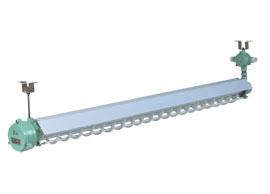Lighting industry shuffle mercury trend
We eliminate tooling costs and save customers money by offering hundreds
and
hundreds of stock overmolds. For highly customized molded cable
manufacturing projects, our advanced
technology allows us to produce custom overmolds at a price and quality
level that clearly sets us ahead of the competition. Custom molded wire assembly, overmolded IP67/68 connectors assembling,customized waterproofing cable assembly ETOP WIREHARNESS LIMITED , https://www.etopwireharness.com Recently, in order to implement the “12th Five-Year Plan for Energy Conservation and Emission Reduction†of the State Council and the “Twelfth Five-Year Plan†for Integrated Prevention and Control of Heavy Metal Pollution, the Ministry of Industry and Information Technology released the “China's Roadmap for Gradually Lowering the Mercury Content of Fluorescent Lampsâ€, according to the road map, and In 2010, the average mercury content of single fluorescent lamps in China decreased by about 80% compared with 2010.
Recently, in order to implement the “12th Five-Year Plan for Energy Conservation and Emission Reduction†of the State Council and the “Twelfth Five-Year Plan†for Integrated Prevention and Control of Heavy Metal Pollution, the Ministry of Industry and Information Technology released the “China's Roadmap for Gradually Lowering the Mercury Content of Fluorescent Lampsâ€, according to the road map, and In 2010, the average mercury content of single fluorescent lamps in China decreased by about 80% compared with 2010.
“The purpose of this national initiative is to gradually reduce the mercury content of fluorescent lamps and reduce the use of hazardous energy in the industry before they can effectively promote industrial green transformation and upgrading,†said Lin Boqiang, director of the China Energy Economic Research Center at Xiamen University.
Target content below 1 mg
According to the reporter, the fluorescent principle of the fluorescent lamp determines that the lamp must contain a small amount of mercury vapor, and mercury is a toxic and harmful heavy metal element. Fluorescent lamps are difficult to recycle after being discarded. They both pollute the environment and threaten human health. They pose a potential threat to the green consumer environment.
In the “12th Five-Year Plan for Energy Saving and Emission Reductionâ€, the country earlier put forward the implementation of the green lighting project. The Twelfth Five-Year Plan for Integrated Prevention and Control of Heavy Metal Pollution is an important goal for pollution control of heavy metals such as mercury.
According to the roadmap, by the end of 2013, the liquid mercury production process for compact fluorescent lamps will be eliminated (fluorescent lamps will be produced as raw materials in the form of liquid mercury or liquid mercury wrap during the production process); by the end of 2014, efforts will be made to completely eliminate liquid mercury production processes. For domestically produced fluorescent lamps for general lighting whose power does not exceed 60 watts, the mercury content shall be gradually reduced in three phases, and strive to achieve a mercury content of more than 50% of the products not exceeding the target value of the same stage. According to the plan, by the end of 2014, by eliminating the liquid mercury process, mercury emissions from the production process will be reduced by approximately 50% compared with 2010. By 2015, the average mercury content of a single fluorescent lamp product will be reduced by about 80% compared to 2010, and more than half of the fluorescent lamps will contain less than 1 milligram of mercury.
Industry exam will come
It is reported that developed economies in Europe, America and other countries have already proposed to reduce the mercury content of fluorescent lamps. With the negotiation of the international convention on mercury, the countries will gradually ban the use of mercury after the convention comes into force. As a major producer and exporter of fluorescent lamps in China, the development of the fluorescent lamp industry faces both domestic and international pressures.
At the same time, the elimination of backward production capacity has formed a consensus in the lighting industry. Before the industry released the "China's lighting industry to stop the use of liquid mercury self-discipline in the production of fluorescent lamps," Op, Sun, Osram, Philips and other companies in the China Lighting Association executive director of the Council agreed and agreed to submit the meeting for consideration.
Industry insiders predict that the energy-saving lighting industry will be shuffled again in 2013. However, companies that use fluorescent lamps as their main products will face a big test of mercury reduction in the next few years. The future of fluorescent lamps will become a hot spot.
“The future of the fluorescent lamp industry is either to reduce polluting energy and transform it to be cleaner. Either gradually exit the market for energy-saving lamps and replace it with other energy-saving products.†Lin Boqiang told reporters that the economy-saving economy has been gradually developed step by step. . So now that pollution control of energy is becoming more stringent, reducing the mercury content is now a green economy trend. Of course, fluorescent lamps will not disappear immediately, and improvements and replacements will take some time.
Lin Boqiang said that from the perspective of energy conservation, LED will undoubtedly bring about considerable energy-saving benefits after large-scale popularization. Therefore, this industry is considered to be a sunrise industry in the field of new energy. The market has great potential, or it will become a new idea for lighting consumption.
“However, LED lighting is still in its early stages of development in China and it will take time to expand market share.†Lin Boqiang said that the development of energy-saving industries still has many obstacles in China. Whether it is the reduction of mercury content by fluorescent lamps or the introduction of new energy-saving products, the cost issue , The problem of profits has plagued many companies. This is why many energy-consuming products are still in production.